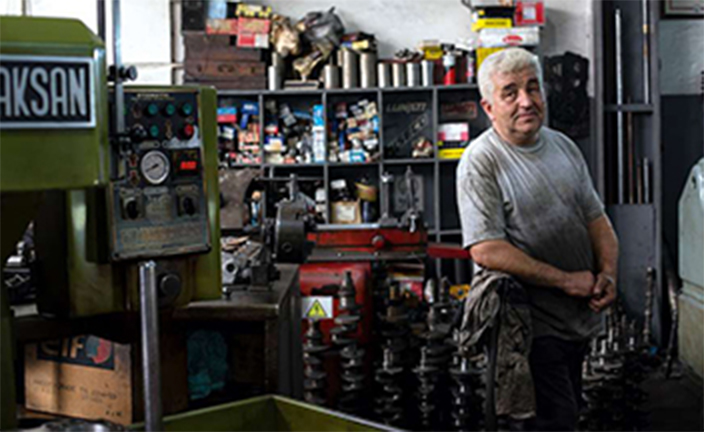How to Support Older Workers with Training Opportunities
Posted by Emma Rose Gallimore on January 2, 2020
People are staying in the workforce longer, some into their 70’s and beyond. For businesses, this longevity can be a valuable asset. Providing jobs for people over 50, means you retain their wisdom, experience, and industry knowledge. You can reap the full benefits of a multi-generational workforce by supporting older workers with training opportunities.

The aging workforce
For years the retirement age was somewhere around sixty-five. When employees reached that magic number, they got a warm handshake, access to medicare, and more free time than they’d ever had before. That’s no longer the case. Workers are staying at their jobs long past 65, with some working into their 70’s or 80’s.
There are several reasons for this shift. The Age Discrimination in Employment Act (ADEA) of 1967 laid the groundwork for older workers to stay in the workforce longer. It prohibited age discrimination in employment decisions and encouraged employers to consider ability rather than age. Add in longer life spans and changing economic demands, and it’s clear why employees are staying in the workforce longer.
Fortunately, many businesses are at least aware of this change. The Transamerica Center for Retirement Studies found that 70% of employers agree that many workers at their company expect to work past 65 or never retire.
However, being aware of something, and creating effective strategies to optimize results in a given situation isn’t always the same thing. Although business don’t set out to perpetrate age discrimination in the workplace, some may accidentally overlook older workers for training and development opportunities. That could be a costly mistake.
Over the next decade, the workforce participation rate for workers aged 65 and older is expected to increase 23.3% while the workforce participation by workers aged 16-24 is expected to decline according to the Bureau of Labor Statistics. According to a presentation from the SHRM Aging Workforce Foundation initiative, oil and gas, manufacturing, and healthcare are among the industries already struggling with how to support an aging workforce. Finding the right strategies to support older workers helps keep your workforce strong by meeting the needs of this growing population.
Training targeted to older workers
AARP offers some great ideas for how to actively recruit for workers over 50, including collaborating with the AARP Foundation’s Back To Work 50+ program or partnering with community organizations to host job fairs aimed at mature workers. Those are great ways to diversify your workforce with older employees, but what about the ones who have already been in your organization for a while?
One way to keep employees effective long past retirement age is to offer targeted training opportunities. At first glance, it may look like older workers are a poorer training investment. After all, they will eventually leave the workforce. Why train a 65 year old who might only work for another decade when you can train a 25 year old with 55 years ahead of them?
Age discrimination concerns aside, training workers of any age is smart business. It gives them the tools to do their best work today and grow with you into the future. Mature workers are most likely to stay for the rest of their career, using their newly honed skills to support your business.
Here’s how to support older workers with training opportunities:
- Understand that older workers are ready and willing to learn, just like their younger counterparts. The assumption that older workers don’t want to learn or change is just that - an assumption. Research has found that older workers are eager to learn, as long as they feel supported by their management.
- Assess talent gaps. Pay special attention to technology and tools that may have evolved since the employee was last in training. While older employees may have deep industry and organizational knowledge, they may not have been exposed to the latest technology or new processes and procedures. Create opportunities for them to learn these new skills.
- Ask the employee what they’d like to learn. Just like younger workers, older employees are often aware of their knowledge gaps and will welcome the opportunity to close them. By engaging older workers in their own development, you show them that training is important regardless of their age.
- Provide flexible, customized training solutions that employees can access at their convenience. Older workers are balancing families, career and training. Make it easy for them to access courses by offering an online solution.
- Encourage two-way mentorship. For an extra boost to your training program you can invite older workers with long-term experience to mentor new hires. In return, the less experienced worker may have useful technical or theoretical knowledge to share with the older employee.
A training partner like Penn Foster can help you assess the training needs of your older workers and create customized strategies to support them.